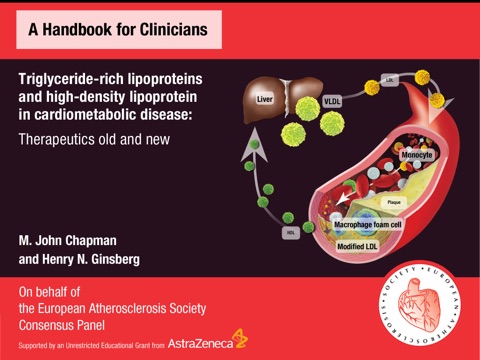
TGL-rich Lipoproteins
Triglyceride-rich lipoproteins and high-density lipoprotein in cardiometabolic disease: Therapeutics old and new - M. John Chapman and Henry N. Ginsberg on behalf of the EAS Consensus Panel.
Elevated triglyceride-rich lipoproteins (TRL), for which triglycerides are a marker, and low plasma concentrations of high-density lipoprotein cholesterol (HDL-C), often referred to as atherogenic dyslipidaemia, is a common risk factor for cardiometabolic disease, even among individuals who achieve target level of low-density lipoprotein cholesterol (LDL-C). Both are also key components of the metabolic syndrome, a pre-diabetic state. Atherogenic dyslipidaemia is also a key driver of cardiovascular risk in individuals with metabolic syndrome or diabetes.
The 2011 ESC/EAS Guidelines for Management of Dyslipidaemia include recommendations for the management of elevated triglycerides and/or low HDL-C after achievement of LDL-C goals. Despite this, management is still far from optimal.
This Handbook authored by Professors Chapman and Ginsberg on behalf of the European Atherosclerosis Society Consensus Panel, provides a unique accessible reference for clinicians. The Handbook provides a comprehensive background to HDL and TRL, and their relevance to cardiometabolic disease, and addresses the ongoing controversies surrounding HDL biology and its clinical relevance. Recommendations for clinical management of atherogenic dyslipidaemia are discussed in the context of the recent ESC/EAS Guidelines for Management of Dyslipidaemia.
The Handbook deals with practical issues in measurement, provides recommendations for treatment, and discusses emerging novel therapies. Case reports are a key feature to guide clinicians in their routine practice.



